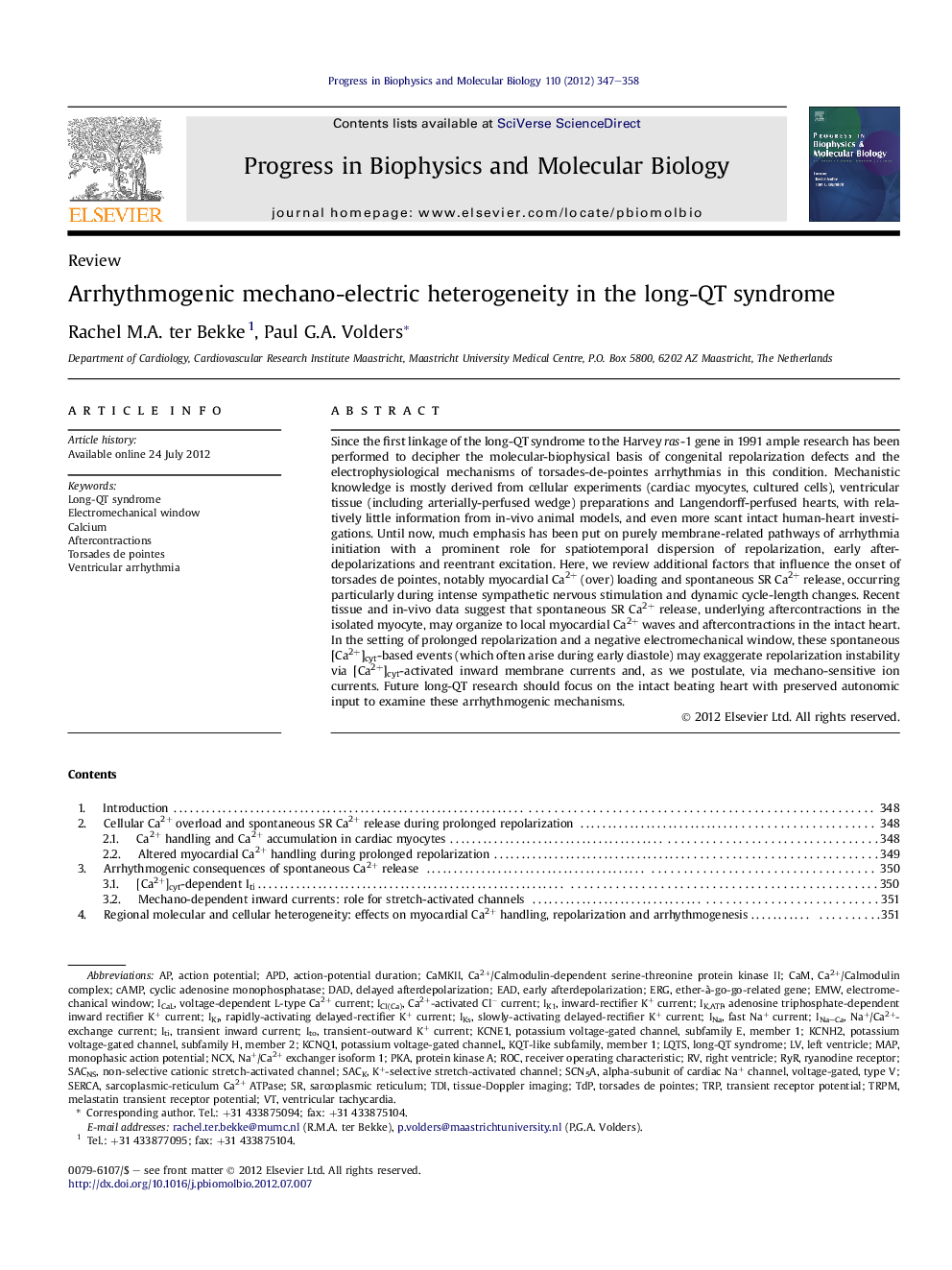| Article ID | Journal | Published Year | Pages | File Type |
|---|---|---|---|---|
| 8401487 | Progress in Biophysics and Molecular Biology | 2012 | 12 Pages |
Abstract
Since the first linkage of the long-QT syndrome to the Harvey ras-1 gene in 1991 ample research has been performed to decipher the molecular-biophysical basis of congenital repolarization defects and the electrophysiological mechanisms of torsades-de-pointes arrhythmias in this condition. Mechanistic knowledge is mostly derived from cellular experiments (cardiac myocytes, cultured cells), ventricular tissue (including arterially-perfused wedge) preparations and Langendorff-perfused hearts, with relatively little information from in-vivo animal models, and even more scant intact human-heart investigations. Until now, much emphasis has been put on purely membrane-related pathways of arrhythmia initiation with a prominent role for spatiotemporal dispersion of repolarization, early afterdepolarizations and reentrant excitation. Here, we review additional factors that influence the onset of torsades de pointes, notably myocardial Ca2+ (over) loading and spontaneous SR Ca2+ release, occurring particularly during intense sympathetic nervous stimulation and dynamic cycle-length changes. Recent tissue and in-vivo data suggest that spontaneous SR Ca2+ release, underlying aftercontractions in the isolated myocyte, may organize to local myocardial Ca2+ waves and aftercontractions in the intact heart. In the setting of prolonged repolarization and a negative electromechanical window, these spontaneous [Ca2+]cyt-based events (which often arise during early diastole) may exaggerate repolarization instability via [Ca2+]cyt-activated inward membrane currents and, as we postulate, via mechano-sensitive ion currents. Future long-QT research should focus on the intact beating heart with preserved autonomic input to examine these arrhythmogenic mechanisms.
Keywords
KCNH2RyRLQTSAPDTDPTRPMEADTorsades de pointesIKrNCXICaLIK1EMwKCNE1KCNQ1Ether-à-go-go-related geneICl(Ca)TrpSCN5AROCERGDADTDIpKaCaMKIIITIIKScAMPINaVentricular arrhythmiaearly afterdepolarizationITOright ventricleleft ventricleVentricular tachycardiaTransient inward currentSarcoplasmic reticulumCAMLong-QT syndromeSERCAmapaction potentialMonophasic action potentialtransient receptor potentialprotein kinase Adelayed afterdepolarizationCalciumRyanodine receptorreceiver operating characteristic
Related Topics
Life Sciences
Biochemistry, Genetics and Molecular Biology
Biophysics
Authors
Rachel M.A. ter Bekke, Paul G.A. Volders,
